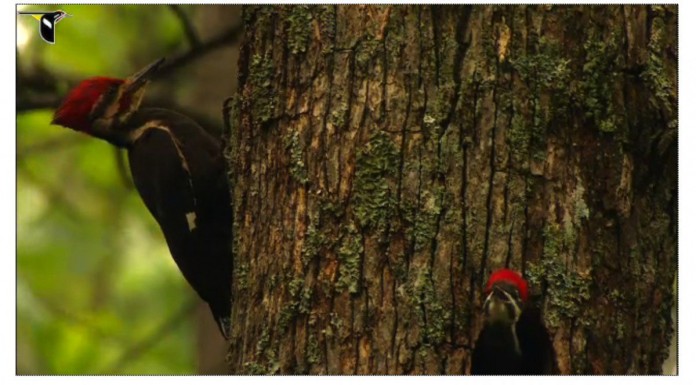The hills are alive with the sound of…birds. For the last week, migratory birds have been announcing their arrival each morning with a chorus of species-specific songs and calls. And yes, there is a difference between songs and calls.
Birds vocalize throughout the year, but the purpose of the sounds varies. Always, however, birds sing to communicate.
Short, nonmusical chips, chirps and whistles uttered year round convey information about location, food sources, and social position. Other calls rally broods and indicate alarm, danger, aggression and annoyance. Such ‘calls’ are the sounds of daily conversation.
Wary of predators
Calls may seem a dangerous way to communicate because sounds can lead hungry predators to tasty singers. But part of the beauty of a call is its ephemeral nature. Once uttered, the sound vanishes into thin air, so predators can’t use call notes to locate birds.
When danger threatens, birds simply stop talking until the threat passes.
True bird songs are longer, more musical, and usually limited to the breeding season. Furthermore, songs are usually sung by males, though some females sing a softer, more subtle song.
Males sing to call attention to themselves. The message depends upon who hears the song.
Defend territory
Male birds sing to establish and defend a territory from other males of the same species. In this sense, song is a keep-out signal. Other males know that if they violate a territory’s boundary, they will be attacked. So they respect territory holders.
On the other hand, male song is also an invitation to females. It says, “I’m available. I can provide for you. Check out my territory. Be my mate.”
It’s tempting to call it a love song, but biologists prefer to keep human emotion out of the discussion. Song is simply the crux of the pair-bonding process.
While teaching an ornithology class many years ago at the University of Oklahoma Biological Station, I wrote a poem to help the students appreciate the voices of birds. Class began at 5 a.m. two days a week. Until daylight, we relied on our ears to identify the birds we heard.
I had forgotten about this poem until I stumbled upon a yellowed hard copy while cleaning my office.
Perhaps it will help you appreciate,
The Language of Birds
(© 1982)
Wherever we go, at all times of day,
We notice the birds, their songs and displays.
It takes only patience, sharp eyes, and/or ears,
To discover that birds are surprisingly near.
As moonbeams fade, and dawn begins breaking,
We shiver and huddle, we try to stop shaking.
“CHUCK-WILL’S-WIDOW!” “WHIP-POOR-WILL!”
After a night hawking moths, they’ve both had their fill.
In no time the sun rises, higher and higher,
AMERICAN ROBINS lead the loud morning choir.
A MOURNING DOVE coos, each note ‘bout the same,
While PHOEBES and BOBWHITE repeat their own names.
MOCKERS and CHATS buzz, scold, and chortle,
A BLUEBIRD contributes its soft gurgling warble.
A RED-EYED VIREO repetitiously preaches,
While a neighboring OVENBIRD incessantly teaches.
Pairs of TITMICE and NUTHATCHES acrobatically feed,
Until a black rat snake approaches with need.
Upon seeing the snake, the birds sound the alarm,
With help from some BLUE JAYS, they all escape harm.
A PILEATED WOODPECKER hammers a snag, no attacks it.
An unruffled SCREECH-OWL blinks, what’s the racket?
CARDINALS and BUNTINGS sing through the day,
Striving to keep rival suitors at bay.
Loudly a RED-TAIL screams overhead,
A snake in her talons hangs limply dead.
When darkness falls, and CHUCK again sings,
He searches for insects on long, agile wings.
At moonrise a BARRED OWL, hoots out his call,
“Who cooks for you? Who cooks for you-alll?”
Look, listen; observe, see, and hear,
The language of birds is incredibly clear.













